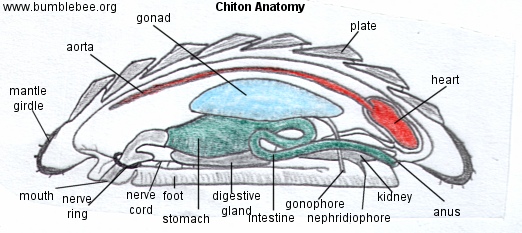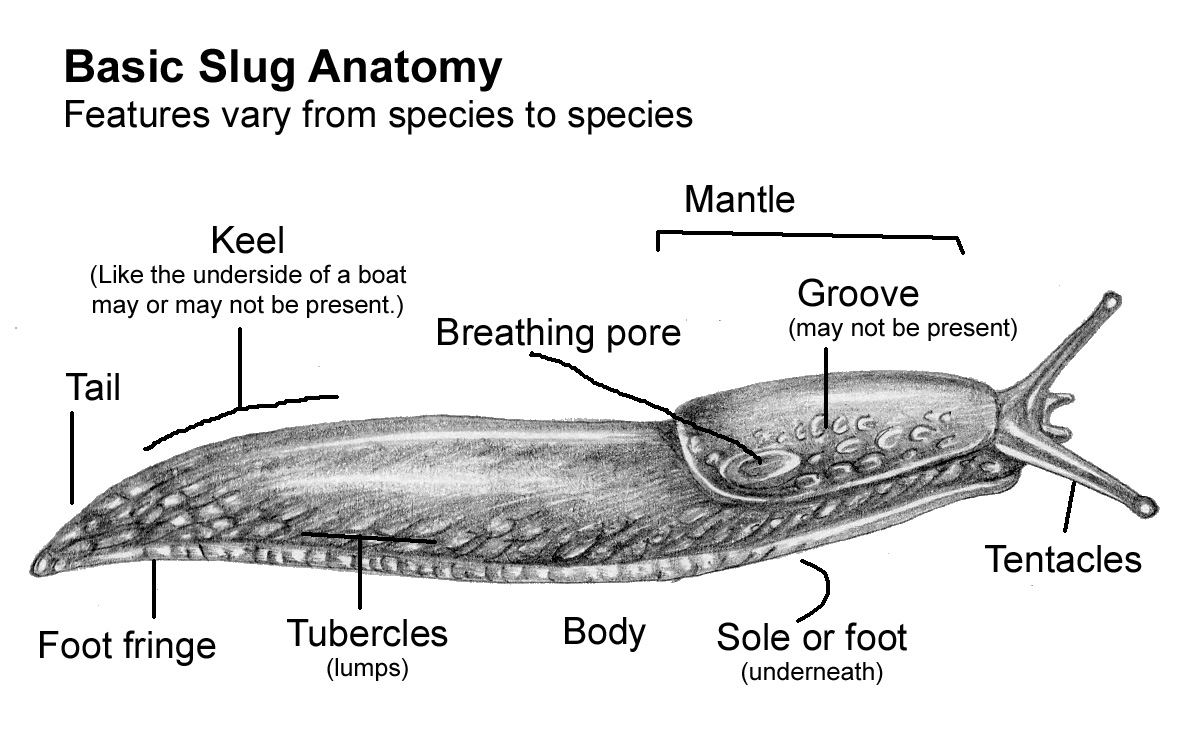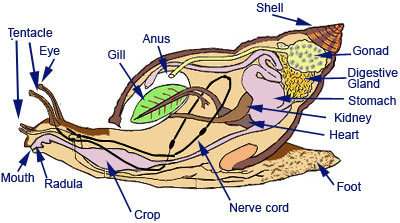
PHYLUM MOLLUSCA
The Phylum Mollusca is made up of over 150,000 diverse species appearing very
different but sharing certain basic characteristics.
All mollusks have a muscular foot used for locomotion, as well as a mantle, an
outgrowth that covers the animal. Many mollusks
have an external calcium carbonate shell, hanging over the mantle, that is
actually produced by the mantle. The mantle is also used
in respiration, waste disposal, and sensory reception. It often creates a mantle
cavity, where the gill is housed. The gill of a mollusk
extracts oxygen from the water and disposes of waste. All species of the phylum
Mollusca have a complete digestive tract, spanning
from the mouth to the anus. Many also have a radula, a unique organ composed
mostly of chitin, in the mouth. The radula allows the
animal to scrape food from surfaces, especially the ocean floor, by sliding back
and forth.
Mollusks have a coelom, which is develops from solid cell masses. This makes all
species in this phylum protosomes. All organs
are suspended in mesentary tissue within this mesodermic coelom, between the
outer covering (ectoderm) and the digestive tube
(endoderm) of the animal. Interestingly, the phylum Mollusca is one of only two
major coelomate phyla that do not have body
segmentation (the other being Echinodermata, as well as other lophophorate
phyla). There are seven main classes of mollusks.
Class Polyplacophora, the chitons, have an external shell with eight overlapping
plates. They normally live on rocks and scrape
algae with their radula. Because the mantle secretes these eight plates, chitons
can bend to fit their home.
TYPICAL CHITON ANATOMY:

Class Aplacophora
Class Aplacophora are mollusks without shells. They usually resemble worms, and
are found in deep water, often more than 3,000
meters. There are only about 300 species in this class, and besides lacking
shells, they are all marine and generally very small.
Class Monoplascophora, meaning having one shell, are a very small group that has
been known of for a short time. Originally
thought to exist only in the fossil record, they were rediscovered in 1952, and
there are now about ten known species, all of which
are deep ocean dwellers. This class is characterized by having an unhinged
shell.
The mollusks of class Scaphopoda have a tubular shell open at both ends. There
are over 400 of these species, and they are usually
found in mud or sand with the posterior end extending out. This class is unusual
because it lacks both gills and heart. Therefore, gas
exchange occurs in the mantle and blood is circulated by contractions of the
foot.

Class Gastropoda are the largest group of mollusks, with between 40,000 and
75,000 species. These are also the only mollusks
that live on land. Gastropods, like class Schapoda, lack gills, and use the
mantle as a makeshift lung for extracting oxygen and
breathing. Most species have coiled shells, and this class has evolved tentacles
and eyes. This class includes marine animals like
the sea slug and terrestrial animals like the slug and snail.


Class Bivalvia (a.k.a. class Pelecypoda) includes all of the bivalves. These are
marine animals with a hinged shell divided into two
halves. The hinge is head together by a ligament and one or two adductor
muscles. Most live in sand or mud, and use their foot for
digging and anchoring to surfaces. These bivalves use the hinges to take in
food, and are also able to jet some distance away by
closing the hinged shell and squirting the water taken in out of the mantle
cavity. Bivalves lack a head and have a spacious mantle
cavity as well. Some examples include clams, oysters, scallops, and mussels.
Class Cephalopoda includes marine animals that differ from other mollusks
because they are built for speed and agility. They have
large brains enclosed in cartilaginous brain cases and sense organs, and most
either have an internal shell, like a squid, or lack a
shell, like an octopus. All cephalopods are predators, and use jaws and radula
to crush and rip prey. Like bivalves, they are able to
move by taking water into the mantle cavity and shooting it back out. Because of
a developed brain, good eye sight, and sense
organs, cephalopods are considered to be one of the most advanced vertebrates.
